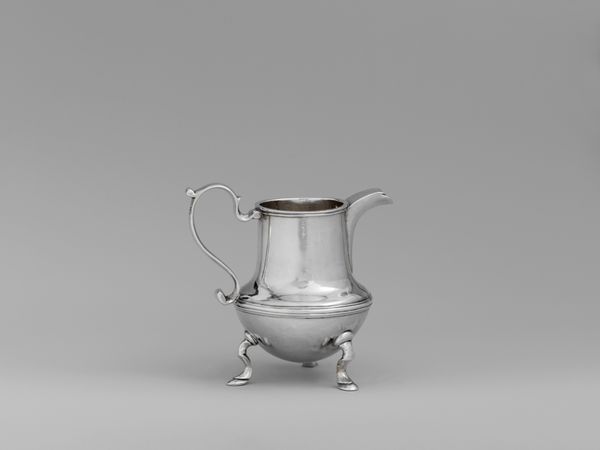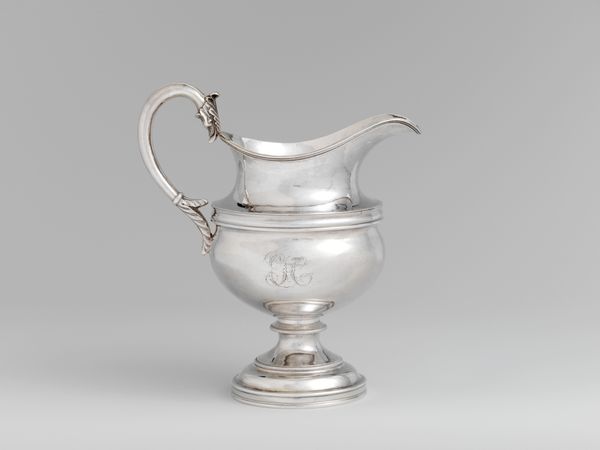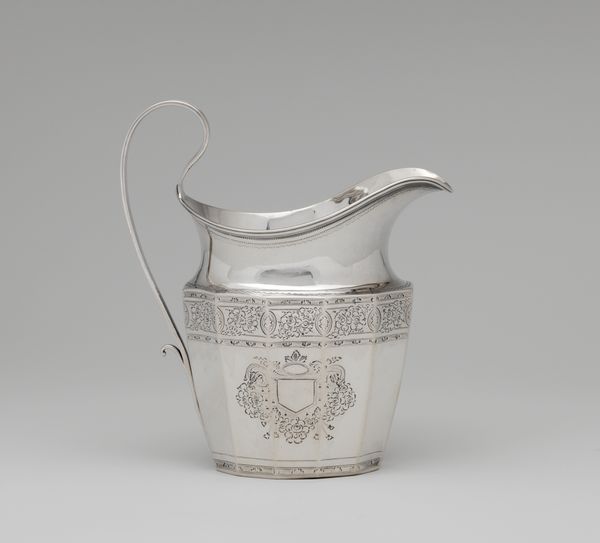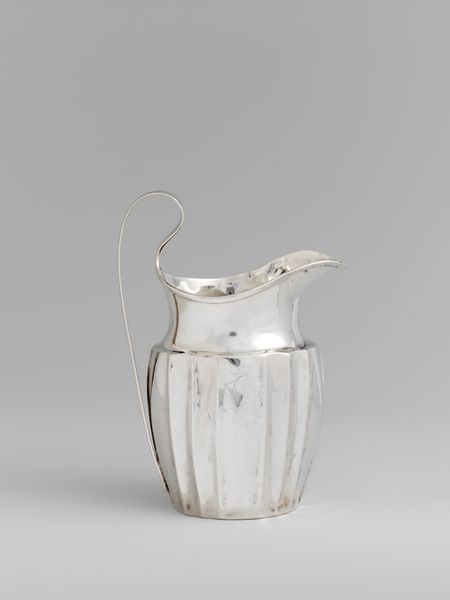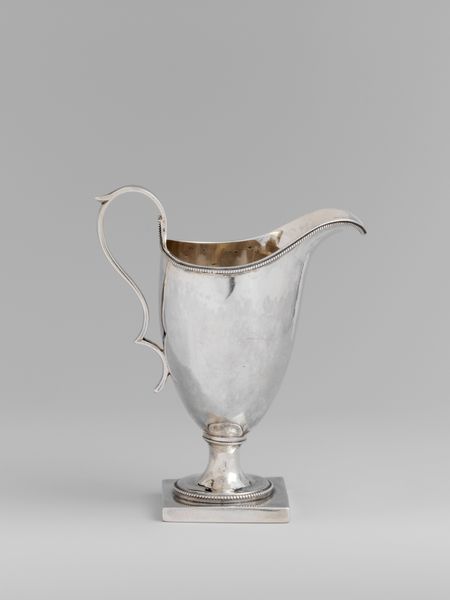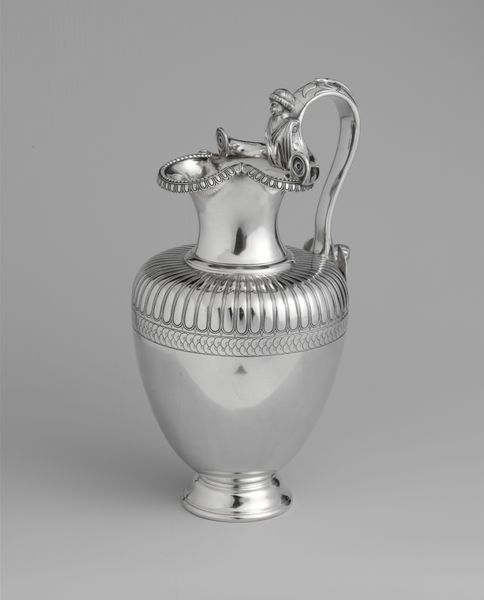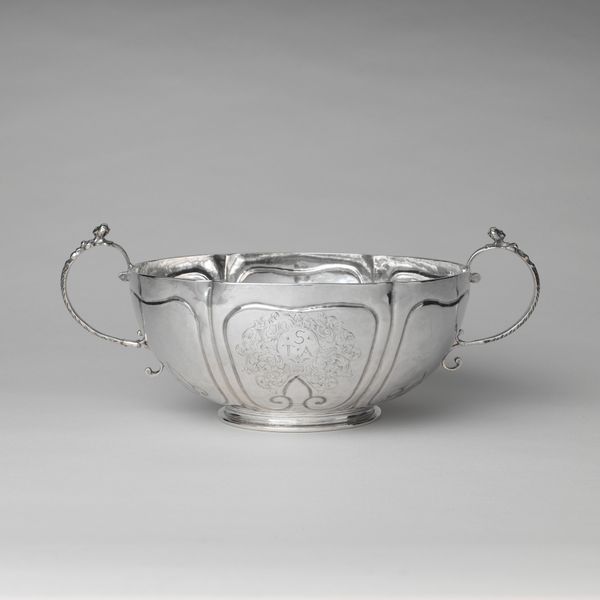
silver, metal, sculpture
#
silver
#
metal
#
sculpture
#
decorative-art
Dimensions: 5 1/2 x 6 5/8 in. (14 x 16.8 cm); 7 oz. 17 dwt. (243.4 g)
Copyright: Public Domain
Curator: Right now, we're looking at a Creamer crafted sometime between 1810 and 1830 by Isaac Hutton. It's made of silver, residing here at the Metropolitan Museum of Art. Editor: It’s strikingly simple. Something about the rounded body and the almost dainty little ball feet gives it a strange sense of both heft and lightness. Curator: The appeal lies precisely in that interplay. Pieces like this were not merely functional objects. Silverware in the early 19th century signified social status and participation in certain cultural rituals surrounding domesticity. Owning such refined objects implied certain levels of respectability and class aspiration, especially given the intricate craftsmanship involved. Editor: It almost has a naive, folksy feel. I wonder about those initials engraved on the side. Initials often function as personal emblems, imbuing objects with meaning for family narratives. Beyond simple identification, do you think these monograms gave them something deeper, a tangible link to kinship? Curator: Definitely, those initials elevate the cream pitcher beyond a mere object. Ownership in a time when owning silver was noteworthy marked not only financial but also generational privilege, speaking of upward social mobility, lineage, and establishment. Think about what tea-drinking rituals meant socially then. This creamer wasn’t just about milk, but about societal performance. Editor: You're right. And those round feet, so unexpected, suggest almost an animalistic stance. Almost like a creature at rest. It’s strange, because I think that juxtaposition between utility and that animal-like grounded posture creates tension and charm. It elevates it beyond just being functional, transforming into a quiet character. Curator: These decorative art pieces had a huge public role. Artisans and patrons showed each other wealth and standing while also helping shape the norms of elegance. Every element of such an item played its role in shaping social relationships. Editor: Pondering those symbolic elements alongside the artist’s deliberate forms adds profound insight to even the simplest utilitarian pieces like this Creamer. Curator: Precisely, remembering the silent work performed in defining the value systems within rising commercial settings encourages examination.
Comments
No comments
Be the first to comment and join the conversation on the ultimate creative platform.
